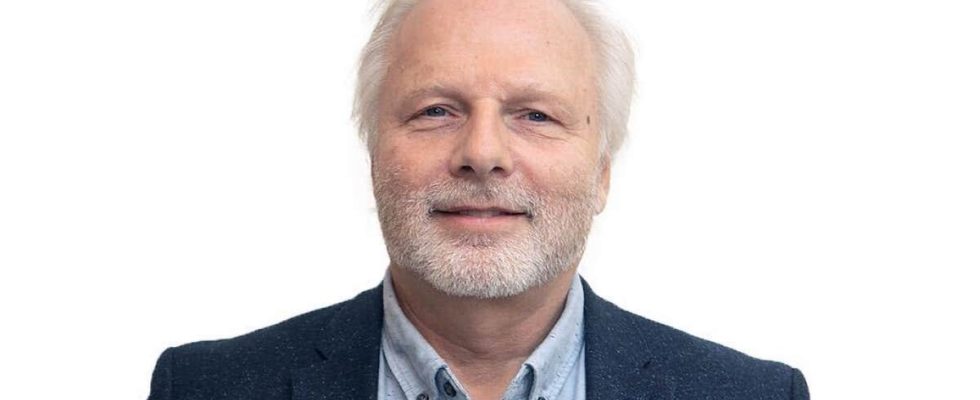In this whole affair, one thing is certain: the mayor’s wife had a copy of the book. Worse, she had bought around ten to distribute. This was not to denounce its content. In front of the municipal council room, full as an egg at the beginning of April, she apologized. What, however, should we think of the mayor’s wife’s husband? Doesn’t the mere presence of the fireman in his residence make him unworthy of his position? He claims not to have read it, expresses his disagreement with its distribution by his partner, with whom, he specifies, he does not always agree. Better still, he voted with the other councilors to unanimously denounce the infamous work. Is it sufficient ?
Demands for resignation fell loudly, both from the room, where there were many local Aboriginal people, and from mixed-race and white municipal councilors. For the moment, the chosen one is resisting.
This storm is taking place in Quesnel, a municipality of 12,000 inhabitants, in British Columbia, neighboring indigenous communities. The book is called Serious Error. How the Media Misled Us (and the Truth about Residential Schools). There we find a collection of texts that challenge assertions held as sacred. The first chapter is by Quebec historian Jacques Rouillard, who notes that no human remains have been discovered in Kamloops, where three years ago a radar study suggested their presence.
This discovery sparked a national and international wave of disapproval. Sixteen communities then suspected the existence of other clandestine cemeteries. In the few places where proper excavations have been carried out, no bones have been found. At the epicenter of the earthquake, in Kamloops, the local Indigenous nation is offering no indication that it will allow excavations to confirm, or deny, the presence of bones.
Serious Error presents the research of an archivist who indicates that the suspect orchard was previously opened for waterworks and that nothing was discovered there. The federal Ministry of Crown-Indigenous Relations has also hired a Danish company specializing in the study of mass graves and burials to offer its services to communities. None accepted.
Serious Error, ranked ninth among the best-selling essays on Amazon Canada, dares to go further. He calls into question the rigor with which the federal Truth and Reconciliation Commission carried out its research on residential schools, concluding that it was an attempt at cultural genocide. The work of the commission is considerable, having heard up to 7,000 testimonies and examining the partial archives available. But the defendants — the religious communities, the local authorities — were unable to offer counterarguments or conduct cross-examination.
The extent of the testimonies heard attests to the existence of mistreatment and an assimilative desire. However, the unequivocal nature of the investigation does not allow all the available evidence to be integrated. What to do with the positive written testimonies of Aboriginal people who attended residential schools, cited in Serious Error ? The experience was not traumatic for everyone. In what proportion was it? Were dissenting voices solicited?
There are documented cases of clerics insisting on teaching children the indigenous language and emphasizing their nation’s traditions and calendar. What is their place in the story? Are they extremely rare or frequent? Much was made of young people forced to spend the winter in residential schools. But what about the families who voluntarily enrolled them? The mistreatment of children by too many religious people is one of the great tragedies of history. But if we have to talk about racism, shouldn’t we determine whether this mistreatment was more common among non-whites than among whites? This comparative analysis does not exist.
We understand that the book is disturbing. There are controversial signatures, such as that of Barbara Kay – not a friend of minorities, including the French-speaking minority – and the preface was entrusted to the sulphurous Conrad Black. However, several texts ask factual questions and provide documented elements – for example by identifying, in ordinary cemeteries, hundreds of children whose suspicious disappearance the Truth and Reconciliation Commission had reported.
We come away with the impression of a huge waste. If the Commission had worked according to the rules of the art, rather than in the mode of the inquisition, we could sit on a real common truth, surviving the test of contradiction. This possibility is behind us. The refusal of communities to allow independent excavations in places where they presume the existence of burials constitutes an ongoing scandal. The fact that the RCMP is washing its hands of it is another.
The federal government is preparing to act. The budget provides $5 million to “establish a program to combat the denial of the reality of residential schools.” Ottawa is awaiting proposals aimed at criminalizing the public expression of doubts about the genocide story or the existence of graves. We are waiting to know what penalties will fall on the editors, sellers or readers of Serious Error.
The case of Quebec is special. Firstly because no community claims to have identified this type of clandestine cemetery here. The number of residential schools was smaller in Quebec than in the West, as was their number of years of operation. It would be possible, and fruitful for the future of our relations with Indigenous people, for a Quebec commission to be formed, jointly with the First Nations, to explore together, in a spirit of inquiry and in a scientific and comparative approach, the story true and verified residential schools, kidnappings, forced sterilizations and other injustices that darken our recent history.
